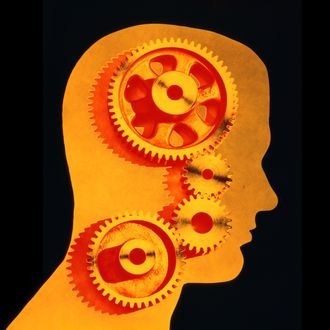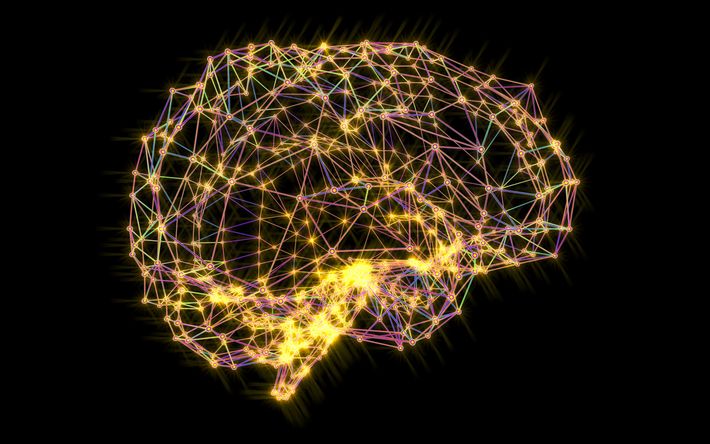
The planet’s 7.5 billion people are different in so many ways, but there’s one thing they share: the sense of being alive, right now, in this particular moment.
Or rather, that’s what it feels like. But while “right now” seems like the most obvious and intuitive feeling in the real world, it turns out to be considerably stranger once you peek under the hood. Human thought takes time to form, and so the “right now” that we’re experiencing inside our skulls is always a little later than what’s going on in the outside world. It takes 500 milliseconds, or half a second, for sensory information from the outside world to be incorporated into conscious experience. So, in a sense, the future has already happened — we’re just not aware of it yet.
To make things even more complicated, the different senses operate at different speeds, so to create a unified sense of “right now,” the brain has to delay some of them in order to stitch them seamlessly into consciousness.
A weird side effect of this is that you can experimentally tweak a person’s perception so that it seems like cause and effect are reversed. Psychologists have long known that if a voluntary action (like pressing a button) is followed by a delayed effect (such as a flash) the brain will create the sensation that the two are closer together in time than they really are. Experimenters led by Chess Stetson at the University of Texas set up a device that would set off a flash of light after a preset delay of a small fraction of a second. They then asked test subjects to press the button repeatedly. After a while the researchers removed the delay so that the flash occurred instantaneously. When they next pushed the button, the subjects had the weird experience that the flash was happening before the action that triggered it.
The conscious mind is prone to this kind of manipulation because it has a complex computational mission. It must interpret the world, make predictions about the future, and figure out a course of action. All of this is difficult and slow. And while conscious thought is invaluable for forming long-term strategy, it’s absolutely useless in the face of fast-moving danger. Imagine that a tiger leaps out of the bushes at you: If you have to perceive the situation consciously and reason through a response, you’ll be dead.

Fortunately, the brain has several layers of emergency-response circuitry, each faster and more simplistic than the last.
The fastest is the startle reflex. If you’re walking along and you suddenly hear a loud noise, your ear will trigger an extremely simple chain of just three neurons that connect to the spinal cord and brain stem. Within five milliseconds, hundreds of muscles are recruited into a self-defense reaction: eyelids shut, shoulders and chest tighten up, hands clench. There’s absolutely nothing you can do about it — by the time you’re consciously aware that you’ve been startled, you’re already two feet in the air.
Given a few more milliseconds, the body is able to respond in a more nuanced way. When something threatening occurs, it takes about 12 milliseconds for the information to reach the amygdala, the almond-shaped neural hub that’s one of the most important centers for emotional processing. The amygdala isn’t super-sophisticated, but it knows what danger looks like. Imagine that you’re about to get into bed, and you pull back the sheets — and there, right in front of your face, is a three-foot-long snake. The amygdala triggers an immediate fight-or-flight response: your heart rate goes through the roof, your pupils dilate, and you hear yourself scream. A half-second later, your consciousness kicks in and you realize it’s a rubber snake, and you go to throttle your 10-year-old.
We tend to think of startle and panic as bad things, because more often than not, they turn out to be overreactions. But once in a while, they can save your bacon. I’ll never forget the time I put my infant son in his bouncy chair on the kitchen table and turned around to the kitchen counter to make pancakes. I was holding a measuring cup full of flour when I suddenly found myself spinning around, flour flying everywhere, and grabbing my son, who had bounced too far forward and was at that moment falling head first toward the floor. For an instant I crouched there, my son’s head suspended a foot above the floor, wondering what the hell had just happened. (I later learned that there is an entire YouTube genre of “dad save” videos documenting just such behavior.)
This is a dramatic example, but the principle applies to all sorts of daily activity: anything that we do in the span of less than half a second — hitting a fastball, improvising a lyric, catching a stranger’s glance — we do entirely through automatic circuitry rather than conscious decision. The upshot is either depressing or inspiring, depending on how you look at it: For all the wonders that human consciousness has brought into the world, some of the best things we do we accomplish without it.